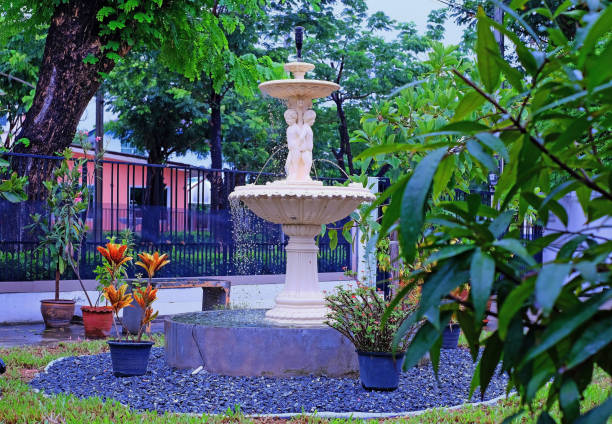Before installing a water feature, it’s important to consider several factors to ensure a successful and enjoyable addition to your space. Here’s a comprehensive list of things to know before installing a water feature:
- Local Regulations and Permits: Check with your local municipality regarding any regulations or permits required for installing water features. Some areas may have specific guidelines or restrictions, especially if the water feature involves significant construction or modifications.
- Budget Considerations: Establish a budget for your water feature project. Consider not only the initial installation costs but also ongoing maintenance, electricity, and potential repairs. This will help you choose a water feature that aligns with your financial resources.
- Water Source and Availability: Ensure that you have a reliable and easily accessible water source for your feature. Consider the water requirements of the chosen feature and assess whether it aligns with the available resources. This is crucial for maintaining the water level and ensuring proper functionality.
- Space and Location: Evaluate your outdoor space and choose a location that complements the overall landscape. Consider factors such as sunlight exposure, visibility from various angles, and proximity to utility connections (if needed). The location should enhance the aesthetics and accessibility of the water feature.
- Maintenance Requirements: Different water features have varying maintenance needs. Understand the maintenance requirements of the chosen feature, including cleaning, water treatment, and pump maintenance. Choose a feature that aligns with the level of maintenance you’re willing to commit to.
- Electricity Accessibility: Determine whether the water feature requires electricity. Ensure that there is a convenient and safe electrical source nearby. Some features, like fountains or lights, may need a power supply, so plan accordingly and consider professional electrical installation if necessary.
- Climate Considerations: Consider the local climate when choosing a water feature. In colder climates, features may require winterizing to prevent damage from freezing temperatures. Some features may not be suitable for extreme weather conditions, so choose one that aligns with your climate.
- Wildlife Impact:
- Be aware of how the water feature might attract wildlife. While this can be a positive aspect, it’s essential to consider potential issues such as mosquitoes breeding in standing water. Incorporate measures like adding mosquito dunks or aeration to address such concerns.
- Material Durability: Choose durable materials that can withstand outdoor elements. Weather-resistant materials like stainless steel, concrete, or quality resin are suitable for long-lasting performance. Consider how well the material complements your overall design preferences.
- Water Feature Type: Research and select the type of water feature that suits your preferences and fits the available space. Options include fountains, ponds, waterfalls, and birdbaths. Each type comes with its own set of considerations, so choose one that aligns with your aesthetic and functional goals.
- Sound Level: Consider the sound level produced by the water feature. Some people enjoy the soothing sound of running water, while others prefer a quieter ambiance. The chosen water feature should match your preference and not disturb neighbors if applicable.
- Safety Measures: Prioritize safety, especially if you have children or pets. Ensure that the water feature is designed and installed with safety in mind. Features like ponds should have secure edges, and electrical components should be properly installed to prevent any accidents.
By addressing these considerations before installing a water feature, you can make informed decisions that lead to a successful and enjoyable addition to your outdoor space. Planning ahead will help you avoid potential challenges and create a harmonious and aesthetically pleasing environment.
